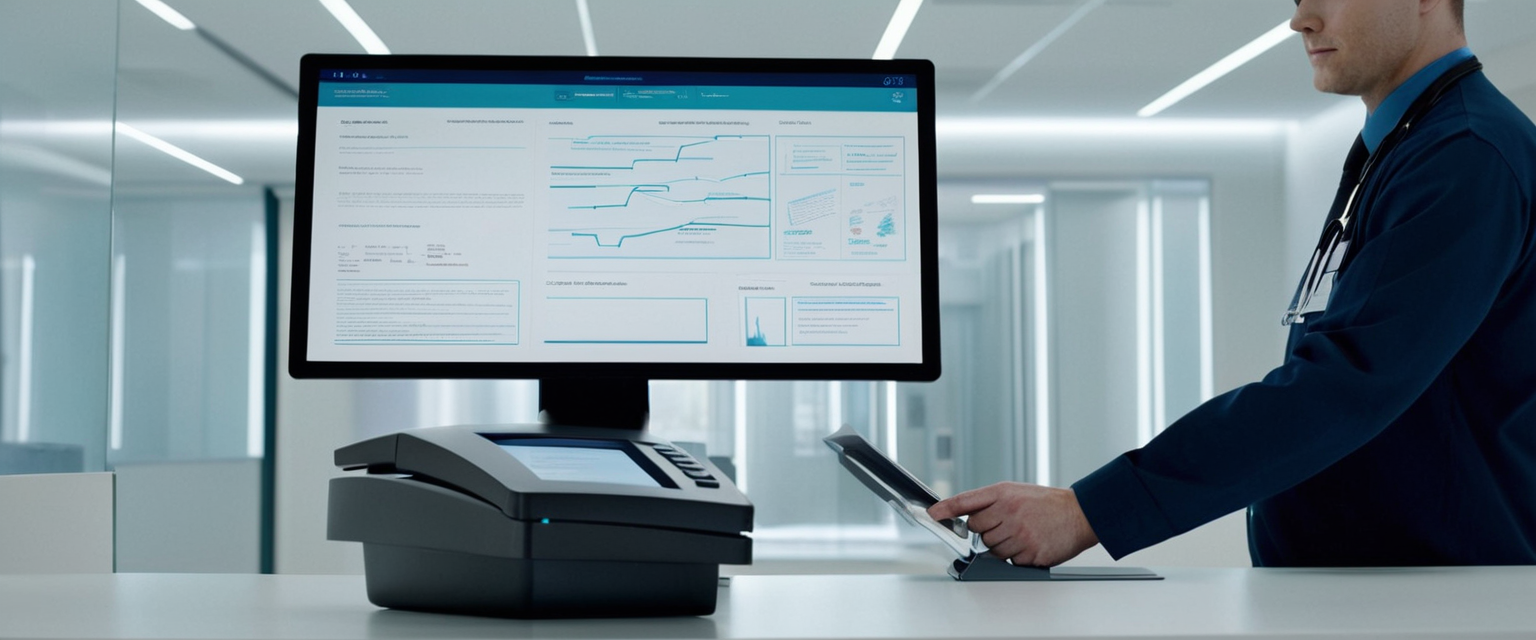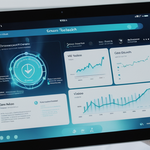
Health insurance cards represent critical gateways to sensitive personal and medical information, requiring careful management and strategic storage to prevent identity theft, fraudulent claims, and unauthorized access to healthcare services. This comprehensive report examines the multifaceted challenges of protecting health insurance cards through both physical and digital storage methods, analyzing the security risks, regulatory compliance requirements, and practical strategies necessary to safeguard this vital documentation. The analysis reveals that consumers face a fundamental tension between convenience and security, one that can only be resolved through a combination of thoughtful organizational systems, modern encryption technologies, and adherence to established security frameworks such as HIPAA. By implementing layered protection strategies that incorporate both physical and digital storage solutions, individuals and healthcare organizations can significantly reduce the risk of medical identity theft, minimize exposure to data breaches, and maintain compliance with federal privacy regulations while ensuring legitimate access to healthcare services when needed.
The Critical Importance of Proper Insurance Card Storage and Related Healthcare Documents
Health insurance cards function as more than mere convenience items; they serve as primary authentication documents that grant access to medical services and contain sensitive financial and personal information that, if compromised, can result in substantial harm to individuals and their families. The typical health insurance card displays numerous data points that identify individuals uniquely, including their full names, policy numbers, group numbers, member identification numbers, employer information, copayment structures, prescription benefit details, and contact information for customer service representatives and claims departments. When considered individually, each piece of information might seem relatively innocuous, but when combined, these data elements create a complete picture that criminals can exploit to commit medical identity theft, file fraudulent insurance claims, obtain prescriptions under someone else’s name, or access medical services that will be billed to the victim’s insurance account.
The significance of proper insurance card storage becomes apparent when one considers the broader ecosystem of financial and medical documents that require protection. Health insurance cards typically represent just one component of a larger portfolio of sensitive documentation that individuals accumulate throughout their lives, including medical records, billing statements, explanation of benefits documents, prescription bottles, appointment cards, and emergency contact information. These documents collectively create a comprehensive portrait of an individual’s health status, medical history, financial circumstances, and personal relationships, information that is far more valuable to cybercriminals and identity thieves than traditional financial data such as credit card numbers. The increasing digitization of healthcare has made this challenge even more acute, as healthcare organizations transition from paper-based record systems to electronic health records while simultaneously maintaining legacy paper documentation, creating multiple potential points of vulnerability where insurance card information might be exposed, lost, or compromised.
The personal stakes involved in protecting insurance card information extend beyond financial concerns to encompass fundamental aspects of healthcare access and quality. When medical identity theft occurs, victims may find that fraudulent medical records created by identity thieves are intermingled with legitimate medical records in healthcare provider databases and insurance company systems, making it extraordinarily difficult to untangle accurate from inaccurate health information. This contaminated medical record can have severe consequences for legitimate healthcare, potentially leading to inappropriate medical treatment based on false diagnoses, medication interactions based on medications never actually prescribed, or denial of coverage due to pre-existing conditions that never existed for the actual patient. Additionally, from the perspective of administrative burden, victims of medical identity theft report spending months or even years attempting to correct their medical records and resolve billing disputes, often requiring substantial out-of-pocket costs to clear fraudulent debt and restore their medical profiles.
Understanding the Specific Security Threats to Health Insurance Card Information
Medical identity theft represents a distinct and particularly challenging form of identity theft that differs substantially from traditional financial identity theft in its mechanisms, detection difficulty, and remediation requirements. When a criminal obtains someone’s health insurance card, they possess nearly all of the information required to present themselves as the victim and either schedule medical appointments with healthcare providers or submit claims through insurance channels. The perpetrator does not necessarily need to physically visit healthcare facilities to cause damage; in some cases, they may simply call doctors’ offices, pharmacies, or insurance companies directly, providing the stolen information to obtain services or information without ever appearing in person. This remote capability makes the crime particularly insidious because no physical confrontation or detection is required, and the victim may not discover the fraud until months or even years after the initial theft when they receive unexpected bills or notices from healthcare providers or insurance companies regarding services they never received.
The mechanisms by which criminals obtain health insurance cards vary considerably, reflecting both opportunistic theft and systematic data breaches. The most straightforward mechanism involves simple physical theft, such as when a consumer leaves their insurance card in a restaurant, grocery store, or public transportation system, allowing any person who finds it to access all necessary information for fraudulent purposes. Slightly more sophisticated criminals specifically target locations where they might expect to find insurance cards, such as gyms where individuals change clothes and leave personal items in unsecured lockers, or healthcare facilities themselves where patients are required to present insurance information during check-in processes. Beyond these opportunistic theft scenarios, insurance card information is frequently compromised through data breaches at healthcare organizations, insurance companies, pharmacies, and other entities that collect and store this information as part of normal business operations. Indeed, from 2009 to 2021, data breaches impacted nearly 315 million healthcare records overall, and medical records have become increasingly valuable to cybercriminals, with individual medical records selling for between $250 and $1,000 on dark web marketplaces compared to approximately $5 for credit card numbers.
The case of a woman from Texas illustrates the serious consequences of medical identity theft involving stolen insurance cards. In this documented case, a criminal obtained the victim’s health insurance card after the victim briefly left her vehicle to pay for gasoline at a service station. Over the subsequent two years, the perpetrator used the stolen card to obtain over 1,700 opioid painkillers from nearby pharmacies by presenting forged prescriptions to multiple healthcare providers. Although the charges against the victim were ultimately dismissed, the victim was required to spend five years and $1,500 to clear her arrest record, and the actual thieves were never identified or prosecuted. This case exemplifies the profound impact that even a temporary lapse in vigilance regarding insurance card protection can produce, as well as the extraordinary difficulty and expense involved in recovering from medical identity theft even when the victim successfully proves her innocence.
Physical Storage Solutions and Strategic Approaches to Carrying Insurance Cards
Security professionals increasingly recommend that individuals not carry their health insurance cards in their wallets during their daily activities, instead keeping cards at home in a secure location and accessing necessary information through alternative means when required. This recommendation reflects a cost-benefit analysis that weighs the genuine risks of theft or loss against the convenience of immediate access. For most routine healthcare needs, including scheduled doctor’s appointments and pharmacy visits, individuals can provide their insurance information over the telephone to healthcare providers or pharmacies without requiring the physical card to be present. When individuals must attend healthcare appointments, they may contact their provider in advance and inquire whether a physical card is strictly necessary or whether verbal confirmation of insurance information will suffice, particularly for follow-up appointments with established healthcare providers who already have the information on file. However, this recommendation does not apply universally to all situations; individuals who experience frequent or unpredictable medical emergencies, or who struggle to reliably remember important insurance details, may reasonably conclude that carrying a card poses an acceptable risk given their particular healthcare circumstances.
For individuals who do carry insurance cards, reducing exposure time represents a practical strategy that balances accessibility with risk mitigation. When attending medical appointments, individuals should remove their insurance card from their wallet only when necessary, return it immediately after providing the information, and avoid leaving it unattended on desks or counters where administrative staff might not closely monitor it. This brief window of vulnerability is far less risky than keeping the card in a wallet that travels in and out of public spaces throughout the day, as an adversary would need to be present at the specific moment when the card is removed and then successfully steal it before the individual secures it again.
For those who choose to store insurance cards at home, implementing a secure physical storage system serves as the foundation of protection strategy. Homeowners should maintain their insurance cards in a location that is both secure from casual browsing or accidental discovery and also reasonably protected from theft by intruders or temporary visitors. Appropriate storage locations include locked drawers in secure furniture, home safes or safety deposit boxes that are specifically designed for document storage, locked filing cabinets with restricted access, or secure storage containers placed in less obvious locations within the home. Financial and medical experts typically recommend establishing a dedicated filing system or organizational structure within the home that keeps all insurance-related documentation together in one secure location, making it easier to retrieve information when needed while minimizing the time and effort required to search multiple locations.
Physical security containers specifically designed for document protection offer enhanced security compared to standard drawers or file cabinets. Fire-resistant document safes, which are rated to protect documents for specified periods at extremely high temperatures, provide protection not only against theft but also against loss of documentation due to fire, flood, or other natural disasters. These protective containers typically include adjustable shelves that accommodate various document sizes, privacy locks that are keyed rather than electronic, and substantial weight and construction designed to deter casual tampering. According to industry standards, quality fire-resistant document safes are rated to maintain internal temperatures at a specific maximum level for defined time periods during intense fires, meaning a properly maintained fire-resistant safe could preserve insurance cards and related documentation even if a home fire completely destroys the surrounding structure. Individuals storing documents in such containers should ensure that the safes are anchored or weighted to prevent removal by intruders, and that spare keys are maintained in secure off-site locations such as safety deposit boxes at banks.
For individuals who prefer portable document protection, waterproof and fireproof storage containers designed for temporary use during evacuations or emergencies offer a practical compromise that provides substantial protection during the critical early phases of disasters. These containers typically feature plastic page sleeves that allow organization of documents in a binder-like format, protective folders that shield documents from physical damage, and clearly labeled sections that facilitate rapid location of specific documents during stressful emergency situations. The strategy of maintaining such portable emergency containers as part of comprehensive household disaster preparedness ensures that critical documents including insurance cards can be rapidly retrieved and protected if an emergency requires evacuation, while also providing a readily accessible location for routine document reference.
Digital Storage Solutions and Smartphone-Based Insurance Card Management
Modern smartphones and digital wallet technology provide convenient alternatives to physical insurance card storage that can simultaneously offer enhanced security when properly implemented. Nearly every major insurance company now offers mobile applications through which policyholders can access digital versions of their insurance cards, typically displayed as high-resolution images or within native application interfaces that are specifically designed for easy presentation to healthcare providers or law enforcement. The convenience advantage of digital storage is substantial; individuals who maintain digital copies of their insurance cards on their smartphones have immediate access to necessary information at any time, eliminating the need to remember when they last had a physical card or to maintain accurate knowledge of their current policy information.
The process of storing an insurance card as a digital image on a smartphone involves photographing the front and back of the physical card using the device’s built-in camera and storing the images in a secure, passwordprotected location within the phone’s storage system. When photographing insurance cards for digital storage, individuals should ensure that images are high resolution and clearly capture all relevant information, including membership IDs, group numbers, copayment amounts, and contact phone numbers on both sides of the card. These digital images can then be stored in several locations: within native healthcare or insurance company applications that offer secure storage, within password-protected folders on the device’s file system, within password-protected cloud storage services, or within dedicated digital vault applications that specialize in secure document storage. The specific choice of storage location should reflect the individual’s preferences regarding ease of access, security requirements, and tolerance for technical complexity.
When storing insurance cards digitally on smartphones, individuals should implement specific safeguards to prevent unauthorized access to the information even if the device itself is lost or stolen. The most fundamental protection involves ensuring that the smartphone itself is secured with a strong authentication method, either a pattern, PIN, or biometric identifier such as fingerprint or facial recognition that would prevent an unauthorized person from accessing the device at all. Beyond device-level protection, individuals should store digital insurance card images within applications or folders that require additional authentication to access, such as password-protected areas or encrypted folders within password management applications. Apple’s Guided Access feature and Android’s App Pinning feature allow users to lock their display to a specific application while preventing access to other applications or information on the device. These features are particularly valuable when a smartphone must be handed to a police officer, healthcare worker, or another person to display the insurance card, as they prevent the recipient from navigating away from the insurance card image to access other personal information such as text messages, email, or banking applications.
For individuals concerned about the risks of carrying a smartphone containing sensitive information, or who travel through areas with high rates of device theft, the strategy of maintaining a digital card accessible only through web-based portals of insurance companies or healthcare providers offers an alternative approach. Most major insurance companies now allow policyholders to log into web portals and access digital versions of their member ID cards at any time from any internet-connected device, meaning individuals do not need to store a copy on their personal smartphone but can instead retrieve the information by accessing the insurer’s website using any available device such as a library computer or healthcare facility’s patient portal. This approach requires that individuals reliably remember their login credentials and that they have access to internet connectivity when they need to retrieve the information, but it eliminates the risk of losing the information if their personal device is stolen or damaged.

Digital Wallet Integration and SMART Health Insurance Cards
Integration of insurance cards into digital wallet applications on smartphones represents an evolution beyond simple photograph storage that leverages cryptographic technology to create verified digital credentials. The SMART Health Insurance Card initiative, led by The Commons Project Foundation, the CARIN Alliance, and SMART Health IT, aims to establish standardized, interoperable digital insurance cards that can be stored in digital wallets like Apple Wallet and Google Wallet, much as consumers currently store airline boarding passes or loyalty cards. These digital cards offer substantial benefits over traditional plastic cards, including enhanced security through cryptographic verification, reduced environmental impact from eliminating the need to print and mail plastic cards, improved eligibility verification processes that are automated rather than requiring manual review of physical cards, and real-time update capability that allows insurance companies to push updates to active cards when coverage changes or new information becomes available.
The SMART Health Insurance Card standard combines existing SMART Health Card technology with FHIR (Fast Healthcare Interoperability Resources) data standards to create secure, verifiable digital representations of insurance information. These digital credentials contain a secure QR code that healthcare providers can scan to verify the validity of the insurance card and extract the necessary information for billing and coverage verification, while the cryptographic protocols underlying the standard ensure that cards cannot be forged or altered by unauthorized parties. When implemented across the healthcare ecosystem, SMART Health Insurance Cards could streamline the entire patient intake and billing process, as providers could simply scan a QR code rather than manually transcribing information from a physical card into their electronic systems, reducing the likelihood of transcription errors that currently delay or prevent proper claim billing.
SMART Health Links extend the SMART Health Card technology to accommodate larger or more complex medical information that changes frequently by storing encrypted information in the cloud rather than entirely within the card itself. With SMART Health Links, individuals can generate temporary, passcode-protected links to their insurance information, sharing those links with specific healthcare providers while maintaining control over access duration and the ability to revoke access if needed. This approach allows individuals to securely share verified insurance information without risk of unauthorized access or exposure of the information to unintended recipients, addressing the privacy concerns that have historically made some individuals reluctant to share digital copies of their insurance cards through email or other less secure channels.
Digital vault services represent another category of specialized digital storage solution designed specifically to organize and protect important documents including insurance cards. Companies such as GoodTrust, Prisidio, and Trustworthy offer cloud-based digital vault services that allow individuals to store digital images of important documents including insurance cards, vaccination records, identification documents, and financial records in a centralized, encrypted location. These services typically allow individuals to organize documents into folders, set specific access permissions for different individuals or family members, and even establish instructions for what should happen to the documents if the primary account holder becomes incapacitated or passes away. The advantage of using specialized digital vault services rather than general cloud storage is that these services implement security protocols specifically designed for sensitive personal documents, use standardized encryption methods, and maintain robust access control systems that ensure only authorized individuals can view specific documents.
Encryption Technologies and HIPAA Compliance Requirements
Understanding the technical requirements for protecting electronic protected health information (ePHI) is essential for individuals and organizations seeking to implement compliant storage solutions for insurance cards and related healthcare documentation. The Health Insurance Portability and Accountability Act (HIPAA) establishes national standards for protecting health information, including specific requirements that electronic protected health information must be encrypted using approved cryptographic algorithms both when stored at rest and when transmitted over networks. The HIPAA Security Rule does not mandate specific encryption algorithms or key lengths, but instead allows covered entities to implement encryption solutions that conform to standards established by the National Institute of Standards and Technology (NIST), as documented in NIST Special Publication 800-111 for storage encryption and NIST Special Publication 800-52 for encryption in transit.
The most commonly recommended encryption standard for protecting healthcare data is Advanced Encryption Standard (AES), specifically using a 256-bit key length (AES-256). AES-256 encryption is considered virtually unbreakable with current computing technology and is used extensively by governments, militaries, financial institutions, and healthcare organizations to protect the most sensitive information. AES-256 operates by mathematically transforming readable plaintext information into apparently random ciphertext using a 256-bit encryption key, producing \(2^{256}\) possible key combinations, which equals an astronomically large number that would require centuries of computational effort to break through brute-force attack methods even using the most advanced supercomputers currently in existence. The encryption standard uses 14 rounds of transformation to ensure that even with significant computational resources, reversing the encryption without the correct key is infeasible.
When evaluating digital storage solutions for insurance cards and other healthcare documents, individuals and organizations should seek platforms that explicitly implement AES-256 encryption or equivalent security standards, and that document their security practices transparently. HIPAA-compliant cloud storage providers typically implement encryption at multiple levels, including encryption of data at rest on their servers, encryption of data in transit between user devices and the cloud storage provider, and often additional encryption using customer-supplied keys that even the cloud provider cannot decrypt. This multi-layered encryption approach ensures that if any single component of the security infrastructure is compromised, the stored data remains protected by additional encryption layers.
Multi-factor authentication (MFA) represents a complementary security control that works in conjunction with encryption to protect healthcare documents and insurance information from unauthorized access. MFA requires users to provide multiple independent forms of evidence of their identity before gaining access to stored information, typically combining something the user knows (such as a password), something the user has (such as a hardware token or mobile device), and something the user is (such as biometric data like fingerprints or facial recognition). The HIPAA Security Rule does not explicitly mandate MFA, but the U.S. Department of Health and Human Services recommended implementing MFA as early as 2006 in their HIPAA Security Guidance, and MFA is increasingly recognized as an essential component of healthcare data protection strategies. When individuals maintain digital copies of insurance cards in password-protected applications or cloud storage services, enabling MFA for those accounts ensures that even if an unauthorized person somehow obtains the user’s password, they cannot access the stored information without also having access to the second authentication factor.
Hardware tokens and software-based authenticator applications represent two primary mechanisms for implementing MFA. Hardware tokens are small physical devices that generate time-limited numeric codes that must be entered along with a password to gain access to an account; because the token generates new codes every 30-60 seconds, an unauthorized person who only has the password cannot access the account. Software tokens are authenticator applications installed on the user’s smartphone that generate similar time-limited codes, offering convenience comparable to hardware tokens without requiring individuals to carry additional devices, though at the trade-off that compromising the smartphone could potentially compromise both the password and the software token. Biometric MFA methods such as fingerprint or facial recognition authentication offer user experience advantages by eliminating the need to remember and type numeric codes, though they require that users have access to devices equipped with appropriate biometric sensors.
Business Associate Agreements and Third-Party Service Provider Requirements
When individuals or healthcare organizations utilize cloud storage services, digital vault applications, or other third-party platforms to store insurance cards and healthcare documents, implementing appropriate legal safeguards through Business Associate Agreements (BAAs) becomes essential from a HIPAA compliance perspective. A Business Associate Agreement is a legally binding contract between a covered entity or business associate that possesses protected health information and a service provider that will access, process, or store that information on their behalf. The BAA specifies the responsibilities of each party regarding data security, access controls, breach notification procedures, and enforcement of HIPAA requirements, with the fundamental principle being that the service provider assumes the same responsibility for protecting health information that the covered entity that originally collected the information bears.
For individuals storing insurance cards in cloud services or digital vaults, the question of whether a BAA is necessary often depends on the specific context and the nature of the service provider. If an individual is utilizing a service specifically designed for storing healthcare information, such as a HIPAA-compliant digital vault service or a cloud storage provider that explicitly markets HIPAA compliance capabilities, the service provider should be willing to execute a BAA or should clearly communicate that such agreements are not necessary because the individual’s use does not trigger HIPAA coverage requirements. Individuals should avoid storing healthcare information in general-purpose cloud storage services from companies that do not explicitly support HIPAA compliance and have not signed BAAs, as doing so may create legal risks even if the data is encrypted or otherwise protected. When evaluating cloud storage services for healthcare documents, individuals should specifically inquire whether the service provider will sign a BAA, understand what security controls the provider implements, and confirm that the provider stores data in specific geographic jurisdictions if such requirements are important for personal or organizational reasons.
Organizational Systems and Document Management Best Practices
Implementing an effective system for organizing and maintaining health insurance cards and related healthcare documents within the home requires establishing clear categories, logical folder structures, and retention policies that make it easy to locate needed information while ensuring that outdated documentation is properly disposed of when appropriate. The most effective filing systems reflect how individuals intuitively think about their documents rather than imposing abstract organizational schemes that require sustained mental effort to maintain. For many households, organizing by subject matter proves more intuitive than alphabetical organization; establishing broad categories such as “Insurance,” “Medical Records,” “Financial Documents,” and “Personal Identification” creates an organizational framework within which specific subcategories can be developed.
Within a “Insurance” category, individuals might create subcategories for different types of insurance coverage, such as “Health Insurance,” “Auto Insurance,” and “Home Insurance,” or might organize by insurance provider if using services from multiple companies. Digital insurance cards stored on smartphones or in digital vaults can be organized using similar category structures, with individual insurers’ applications maintaining their own organizational schemes while individuals can typically organize stored images in custom folders within their digital storage systems. Color-coding physical files and digital folders provides visual cues that enable rapid identification of specific documents without requiring sustained reading and processing time, which proves particularly valuable during stressful situations such as medical emergencies or insurance disputes when cognitive load is already high.
Retention policies for healthcare documents require balancing the competing interests of maintaining easy access to current documents and avoiding accumulation of outdated information that creates confusion and requires physical or digital storage space. For current insurance cards, retention policies are straightforward; individuals should maintain the most recent card and discard previous versions once they have confirmed that the new card has been successfully activated. When disposing of old insurance cards or insurance documentation, individuals must not simply throw them in the trash, as even outdated insurance cards retain sensitive personal information such as member identification numbers and names that could potentially be exploited. Instead, individuals should shred physical insurance documents using a crosscut shredder that reduces paper to confetti-sized pieces that cannot be reassembled, or should black out sensitive information using permanent markers and then physically damage the card before discarding it. For digital documents, individuals should permanently delete files rather than simply moving them to a trash folder, ensuring that deleted files are not recoverable through data recovery methods.
Documenting personal information about insurance coverage separately from the physical or digital cards provides practical benefits for emergency preparedness and estate planning. Creating a written inventory or digital record that lists insurance policy numbers, coverage type, group numbers, policy effective dates, and contact information for each insurance provider allows individuals or their designated emergency contacts to access this information quickly without needing to locate the physical card if it is lost during an emergency. This documented inventory should be stored in a secure location, such as the same safe or digital vault where insurance cards are maintained, ensuring that both the physical or digital cards and the reference information are protected together.

Scanning and Digitization of Insurance Cards in Healthcare Environments
Healthcare providers have increasingly recognized the practical benefits of scanning or photographing insurance cards during patient intake processes and maintaining digital copies within patient electronic health records. From an administrative perspective, having digital copies of insurance cards eliminates transcription errors that occur when healthcare staff members manually enter insurance information into computer systems, reducing claim denials based on incorrect policy numbers, member IDs, or other identifying information. Digital copies also facilitate rapid verification of coverage without requiring staff to contact insurance companies by telephone, expediting the patient intake process and allowing patients to proceed to clinical evaluation more quickly. Additionally, digital copies of insurance cards stored within patient records provide documentation of the insurance coverage that was active at the time of service, protecting healthcare providers in billing disputes or claims denials by demonstrating that proper coverage verification occurred.
From a patient privacy perspective, however, healthcare providers have recognized that retaining digital copies of insurance cards creates potential security risks if those copies are not protected with appropriate access controls and encryption. Insurance cards contain sensitive personal information that should only be accessible to healthcare staff members with a legitimate need to access billing or coverage information, not to all staff members or external parties who might have access to hospital computer systems. Healthcare providers implementing insurance card scanning processes should ensure that digital scans are stored within secure systems that implement role-based access controls restricting access to authorized billing and administrative staff, and that all access to these documents is logged and auditable for compliance and security monitoring purposes.
The technical quality of scanned insurance cards is essential for ensuring that the digital copies remain usable throughout the patient relationship. Insurance cards often fade or become damaged from repeated removal and insertion into wallets, and scanning processes should include image enhancement technology that can recover faded text and improve clarity even when original physical cards are in poor condition. Healthcare providers should utilize document scanners specifically designed for capturing multiple document types of varying dimensions, including standard paper documents, plastic ID cards, and other materials that might need to be converted to digital format. Once scanned, digital images should be stored at a resolution sufficient that all text is legible when zoomed for review, but not so high that file sizes become impractically large or create excessive storage costs.
Practical Emergency Preparedness and Disaster Planning
Including insurance cards and insurance information within broader household disaster preparedness planning ensures that critical information remains accessible during emergencies when normal access to home storage locations may be compromised. Developing a household inventory of all important documents, including both paper originals and digital copies stored in multiple locations, creates redundancy that protects against loss of any single copy. The Federal Emergency Management Agency (FEMA) recommends that households maintain copies of critical documents such as insurance cards both in secured home storage locations and in off-site locations such as safety deposit boxes at banks, and that digital backups be stored in secure cloud storage that remains accessible even if home physical storage is destroyed.
Creating a written or digital emergency document package that can be quickly retrieved during evacuation situations or accessed remotely during emergencies should include copies of insurance cards and insurance contact information. This emergency package should be maintained in a location that is both secure during normal times and easily accessible during stressful emergency situations, such as a portable fireproof container kept in a prominent location rather than hidden away where it might be forgotten. Family members or designated emergency contacts should know the location of this emergency package and should be trained on its contents and how to use the information it contains if the primary document owner becomes incapacitated or is separated from it during an emergency. Emergency packages should include contact information for all relevant insurance providers, policy numbers, and designations of authorized individuals who may make inquiries or requests on behalf of the insured person.
From a healthcare perspective specifically, maintaining readily accessible copies of insurance information becomes critical in emergency situations when individuals may be unable to communicate verbally or when time constraints prevent lengthy verification processes. Emergency responders and hospital emergency departments often request insurance information immediately upon arrival, and having this information readily available accelerates the administrative aspects of emergency care, allowing clinical staff to focus on treating the actual medical emergency rather than spending time tracking down insurance details. Some individuals maintain medical alert cards or emergency information cards that include insurance policy numbers and contact information, though such cards should not contain complete insurance cards themselves given the security risks.
Advanced Digital Solutions and Cloud-Based Organization
Contemporary cloud storage services and specialized healthcare document management platforms offer sophisticated capabilities for organizing, protecting, and accessing insurance cards and other healthcare documentation from multiple devices and locations. These services typically employ automatic backup and synchronization protocols that ensure documents stored on one device are immediately replicated to cloud storage and accessible from other authorized devices, creating redundancy that protects against loss of information if a single device is damaged or stolen. Full-featured healthcare document management platforms often include search functionality that allows users to rapidly locate specific documents by searching text content, metadata, or visual recognition of document types, dramatically reducing the time required to find needed information compared to manually browsing through physical or digital file systems.
Password manager applications designed for secure storage of sensitive information have increasingly expanded their capabilities to include document storage compartments, allowing individuals to maintain insurance cards, vaccination records, medical identification information, and other healthcare documents within the same encrypted container where they store passwords and other login credentials. These applications use military-grade encryption to protect all stored information, encrypt data both in transit between user devices and the password manager’s servers and at rest within the password manager’s infrastructure, and implement multi-factor authentication to prevent unauthorized account access. The advantage of maintaining insurance cards within a password manager is that the same authentication credentials protect both password information and insurance documents, creating a single secure location that individuals can access from any device.
Document organization and management within these digital platforms benefits from the same organizational principles that guide physical file systems, with color-coding, tagging, and metadata-based searching providing alternative methods for locating specific documents. Many individuals find that digital storage systems allow more flexible organization than physical systems, as a single document can be tagged with multiple categories or associated with multiple files simultaneously, allowing documents to be located through multiple search pathways rather than being constrained to a single location determined by the organizational system. For instance, a health insurance card could be indexed with tags for the specific insurance provider, the insurance plan type, the family member to whom it belongs, and the specific coverage category, allowing the document to be located by searching any of these attributes.
Balancing Security, Convenience, and Access Requirements
The fundamental challenge in protecting health insurance cards involves balancing legitimate security requirements against practical accessibility needs, recognizing that overly restrictive security measures that make insurance information difficult to access may actually increase security risks if individuals respond by adopting less secure storage methods that offer greater convenience. Security researchers have documented that when security requirements become too burdensome relative to perceived benefits, individuals often attempt to work around restrictions or develop workarounds that ultimately create additional security vulnerabilities. For example, individuals who find digital access to insurance information too difficult might revert to carrying physical cards despite security recommendations, or might write insurance information on business cards or notebooks that are far less secure than both physical cards and digital storage.
The optimal approach to insurance card protection typically involves implementing a tiered strategy that matches security measures to the specific context and risk level of different situations. For routine situations such as attending scheduled medical appointments, individuals might retrieve insurance information from secure digital storage immediately before needing it, avoiding the continuous exposure that carrying a physical card creates while preserving accessibility. For emergency situations where time constraints or communication barriers might prevent accessing digital information, maintaining a secure backup location for critical information or utilizing emergency identification systems that healthcare providers can access becomes necessary. For healthcare travel situations such as visiting a different city or traveling internationally, temporarily downloading digital copies of insurance cards to mobile devices might be appropriate despite slightly elevated risks, given that access to that information might become necessary during unexpected medical situations far from home.
Sharing insurance card information with family members or trusted individuals who might need to access it in emergency situations requires implementing appropriate access controls that prevent unnecessary exposure while enabling essential access. Digital vault services and cloud storage platforms typically allow account owners to designate specific individuals with different levels of access to specific documents, such as allowing adult children to view a parent’s insurance information for caregiving purposes while restricting other family members’ access. When sharing physical insurance cards or copies with family members who need access for specific purposes, such as caregivers authorized to manage healthcare on behalf of an elderly parent, establishing clear understandings about security responsibilities and appropriate use of the information becomes important.

Specialized Considerations for Different Insurance Types and Situations
While the fundamental principles of insurance card protection apply broadly, specific considerations arise for different types of insurance coverage and different life situations that require tailored approaches. For individuals enrolled in Medicare, the Centers for Medicare & Medicaid Services and the Social Security Administration specifically recommend against laminating Medicare cards, as lamination can interfere with security features that healthcare providers use to validate card authenticity, even though lamination might seem like a protective measure. Instead, Medicare beneficiaries are advised to use clear plastic ID card sleeves that keep cards visible, clean, and protected from wear while maintaining access to all security features. Replacement Medicare cards are easily available by online request, telephone, or in-person visit to Social Security offices, making it practical for beneficiaries to replace damaged or lost cards without substantial delay.
For individuals with Medicaid or CHIP coverage, state Medicaid agencies handle card replacement and coverage issues, and individuals seeking to obtain replacement cards or update coverage information should contact their specific state agency rather than a national healthcare organization. Medicaid and CHIP cards can typically be requested through state agency websites or by contacting customer service representatives, and replacement cards are generally available within a short timeframe. Individuals traveling or moving between states should be particularly attentive to their Medicaid and CHIP coverage status, as coverage is state-specific and moving to a new state requires updating coverage through the new state’s Medicaid agency.
Peace of Mind in Your Pocket: Final Storage Wisdom
Protecting health insurance cards through thoughtful implementation of physical and digital storage strategies represents an essential component of personal financial security and healthcare privacy that requires matching security measures to individual risk profiles and life circumstances. The evidence overwhelmingly demonstrates that carrying insurance cards in wallets during daily activities creates unnecessary exposure, as the information on cards is typically needed only periodically during scheduled healthcare appointments or planned pharmacy visits, situations where individuals can provide insurance information verbally or retrieve digital copies from secure storage. For most individuals under most circumstances, storing original insurance cards at home in a secure location and utilizing digital copies for routine needs provides an optimal balance between security and accessibility that substantially reduces medical identity theft risks while maintaining practical access to necessary information.
When individuals require immediate access to insurance information during emergencies or travel situations, implementing multiple redundant copies stored in different secure locations provides protection against loss of any single copy while ensuring that accessible information remains available despite circumstances that might compromise one storage location. Digital storage solutions utilizing encryption standards such as AES-256, authentication methods such as multi-factor authentication, and access controls that restrict unauthorized viewing represent the current state of best practices for protecting healthcare documents in technological environments. The ongoing transition toward standardized digital insurance cards such as SMART Health Insurance Cards promises further improvements in security and convenience as these credentials become more widely adopted by insurance providers and healthcare systems.
Organizations and individuals considering implementation of insurance card protection strategies should recognize that no single approach is universally optimal; instead, the most effective strategies are those that reflect careful consideration of personal security requirements, technology preferences, accessibility needs, and life circumstances. Emergency preparedness planning that includes accessible copies of insurance information, organized document management systems that facilitate rapid location of needed information, and regular review and updating of storage systems to reflect changing technology and organizational needs will ensure that insurance cards remain protected while remaining accessible when medical care requires them. By implementing these comprehensive strategies, individuals and families can substantially reduce the risk of medical identity theft and the profound consequences that such theft creates, while simultaneously maintaining the accessibility to insurance information that legitimate healthcare delivery requires.
Protect Your Digital Life with Activate Security
Get 14 powerful security tools in one comprehensive suite. VPN, antivirus, password manager, dark web monitoring, and more.
Get Protected Now





